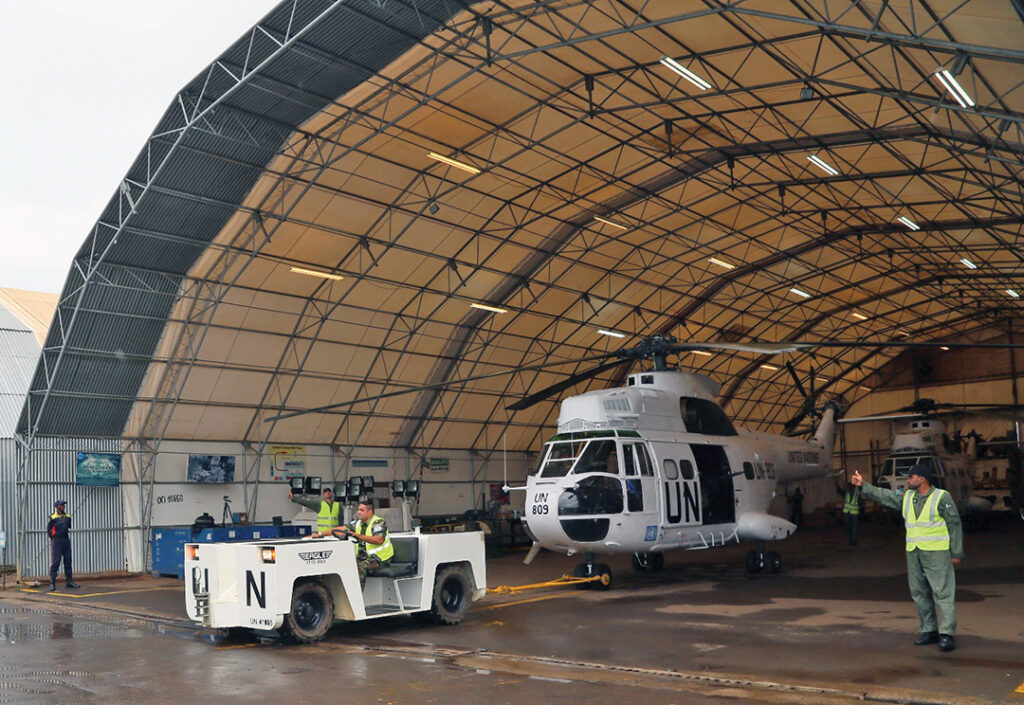MAJ. KHURRAM SHAHZAD, Pakistan Armed Forces
For several decades, United Nations peacekeeping has grown increasing complex. The spectrum of United Nations peacekeeping operations include restoring state authority, protecting civilians, and disarming, demobilizing and reintegrating former combatants. For that reason, successful peacekeeping missions demand greater flexibility and interoperability.
To meet these complex peacekeeping challenges, aviation components often play a pivotal role in maintaining safety, security and stability toward successful achievement of the mission’s mandate. In addition to providing thousands of ground troops to U.N. missions, Pakistan is proud to supply aviation units to ease suffering in places like the Democratic Republic of the Congo (DRC).
Deployment of United Nations
Operation des Nations Unies au Congo was the United Nations’ first peacekeeping mission with muscle, dispatched to the Belgian Congo after the United Nations Security Council Resolution 143 of July 14, 1960.
The second United Nations Force went to DRC’s South Kivu province in 2004 as part of the South Kivu Brigade. Its mission was to implement the mission mandate of the United Nations in the region and to be prepared for deployment in varying regions of the DRC on the directions of the force commander.
The third deployment, as part of the United Nations Organization Stabilization Mission in the Democratic Republic of the Congo (MONUSCO), was in 2011. It was tasked with stabilizing the DRC and providing air support along with timely deployments of other contingents. The peacekeeping force was to also prevent human rights violations in the region and manage refugee inflow from Burundi.
As of July 31, 2021, the total strength of U.N. peacekeeping personnel in the Democratic Republic of the Congo was 17,456. More than 50 nations have contributed military and police personnel for the peacekeeping efforts.
Notably, a Pakistan Aviation Unit of Puma helicopters has been a major contributor to the peacekeeping mission in the DRC since 2011. Before that mission, the unit served in Sierra Leone (UNAMSIL) from 2001 till 2004 and Sudan (UNMIS) from 2006 till 2011.
Pakistan aviation in DRC
The Pakistan Aviation Unit is serving humanity by accomplishing the United Nations peacekeeping mandate and has kept the flag of Pakistan flying high in the multinational deployment.
The squadron’s main area of operation is the Southern Sector but as a mission asset the unit can be tasked all over the DRC. The area is quite demanding, consisting of jungles, high altitudes, marshes and lightly populated areas. The country has limited emergency landing areas along with limited road infrastructure.
Consisting of three Puma SA 330L helicopters, the squadron is commanded by a lieutenant colonel. A total of 12 pilots (including the commanding officer) form part of its flying strength. Each helicopter can carry up to 10 fully equipped Soldiers or 2,000 kilograms of strapped-down cargo.
The helicopter can be pre-positioned at temporary operations bases for up to four weeks, refueling in the field from barrels if necessary. Once summoned for a military mission, the squadron can fly within two hours, although preparation is longer if the helicopters are airlifting a quick reaction force. These quick reaction troops can deploy by fast rope and rappelling.
Pumas have the ability to land on unprepared terrain using visual flight rules day and night without assistance from the troops on the ground. For self-defense, each helicopter mounts two machine guns.
If used to evacuate medical cases, each Puma can accommodate five or six stretcher patients or 10 sitting patients, along with two medics.
Operations and missions
The main task of the Pakistan Aviation Unit in MONUSCO is to provide air support according to the terms of employment reached between the government of Pakistan and the U.N. As of mid-2021, Pakistani helicopters had tallied nearly 14,000 flight hours.
Considering the country’s challenging terrain, this length of service is testimony to the extraordinary professionalism of the pilots and technicians.
The squadron actively participated in several military operations planned by Force Headquarters toward achieving the goal of peacekeeping. Some of the military operations supported by the Pakistan Aviation Unit include Operation Pacific, Operation Resolve and Operation Garuda.
Due to the scarcity of roads in the DRC, emergency medical evacuations are restricted to aerial means. The Pakistan Aviation Unit has continually conducted medical evacuations of all kinds of patients, both military and civilian.
The squadron always manages to lift off within 30 minutes of receiving orders and has saved several lives through timely takeoffs, earning the respect in the Air Operations Branch of the United Nations. Pakistani Pumas have completed nearly 150 medical evacuations, including COVID-19 patients, and saved more than 200 lives.
Over the decades, Pakistan has deployed thousands of troops in U.N. peacekeeping missions around the world. The cost has been high: 156 enlisted personnel and 24 officers have died during these peace and stability missions to some of the most troubled regions of the world.
The 10th Pakistan Aviation Unit is proud to represent the Pakistani flag in MONUSCO. Despite fierce and unfavorable weather, the unit is fully committed to its role and task and has earned great respect among the troops of contributing countries.
In supporting global peace regardless of internal and external challenges, Pakistan has undeniably proven one dictum: “Pakistan, as a responsible nation, upholds peace and detests war and, therefore, it has the capacity of establishing itself as a global peacekeeping and peace-building architect.”

